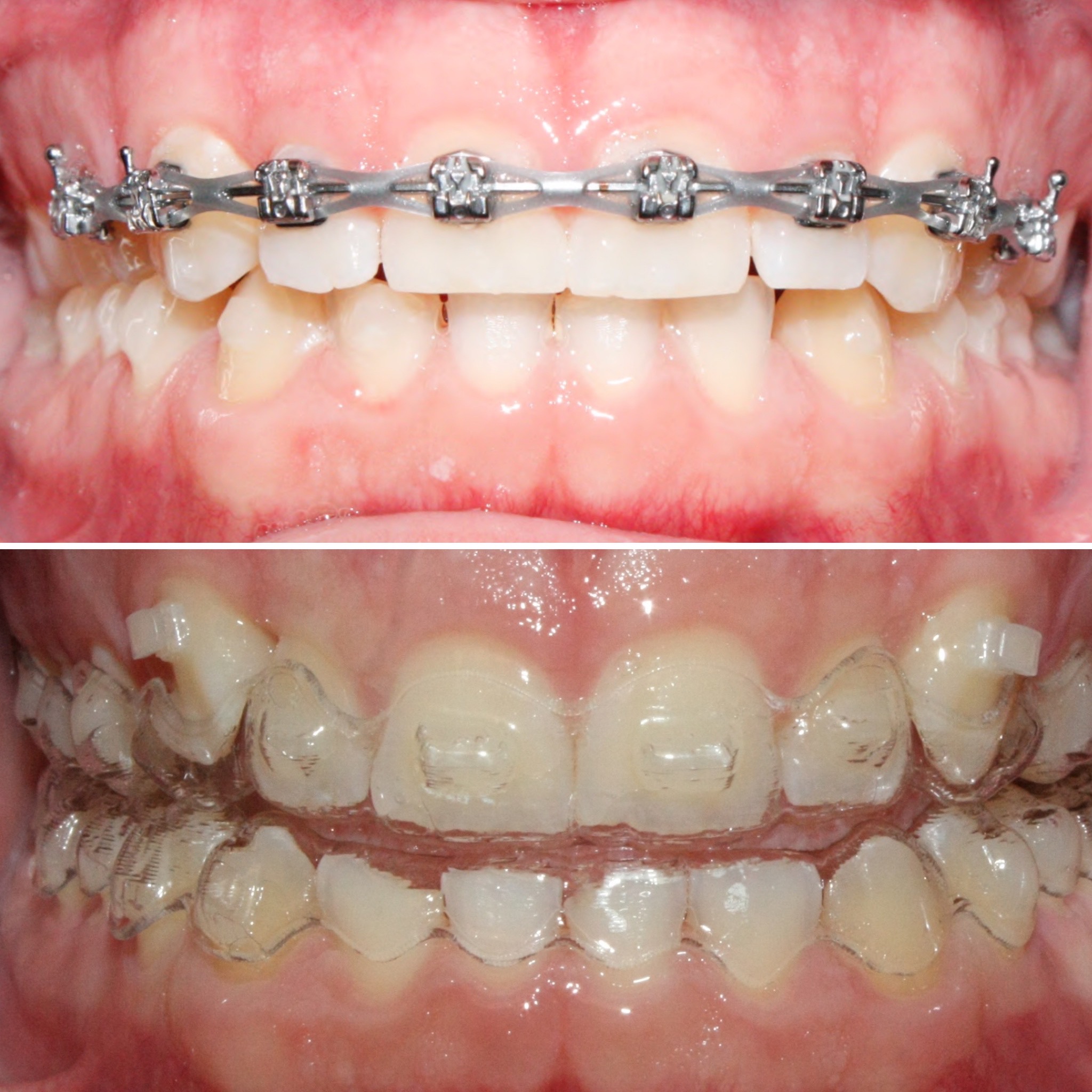Invisalign vs. Conventional Dental braces: Which Alternative Is Right for You?
When thinking about orthodontic therapy, the option between Invisalign and standard braces offers numerous crucial factors that merit careful assessment. Invisalign supplies a very discreet alternative with detachable aligners, while typical dental braces give an extra noticeable yet reliable solution for extreme misalignment.
Introduction of Treatment Alternatives

In contrast, typical dental braces are composed of metal brackets and cables that are bonded to the teeth. This technique applies continual stress over time to accomplish placement. While effective for complicated orthodontic problems, standard dental braces require regular gos to for changes and can posture challenges in maintaining oral hygiene due to the trouble of cleaning about wires and brackets.
Both alternatives have their values, and the selection often depends upon certain oral problems, way of living choices, and person conformity. Ultimately, speaking with an orthodontic specialist is essential for identifying the most appropriate therapy plan customized to specific requirements. Recognizing the subtleties of each option can considerably affect the overall success of orthodontic treatment.
Visual Considerations
A substantial element affecting the option in between Invisalign and typical dental braces is the visual charm each therapy provides. Invisalign aligners are crafted from clear plastic, making them virtually invisible when used.
In contrast, standard braces include metal braces and wires, which can be much more visible. While developments in orthodontic innovation have actually brought about the growth of smaller brackets and colored elastics, standard dental braces still preserve an even more obvious account. For some people, the presence of dental braces might hinder them from looking for required treatment.
Inevitably, the option in between Invisalign and standard dental braces may rest on individual choices relating to looks. People who prioritize discretion commonly lean towards Invisalign, while those that are less worried regarding visibility may choose typical braces. Comprehending the aesthetic effects of each option is important for making an educated choice that aligns with one's way of life and choices.
Comfort and Convenience

In regards to convenience, Invisalign aligners are removable, enabling individuals to enjoy their favored foods without restriction and preserve ideal dental hygiene. Brushing and flossing are streamlined, as the aligners can be obtained during these regimens, whereas traditional dental braces need careful maneuvering around brackets and cables.
In comparison, typical braces demand routine modifications, making them less practical for those with active routines. In general, the comfort and benefit of Invisalign make it an appealing choice for lots of individuals looking for orthodontic therapy.
Treatment Period and Performance
While both Invisalign and typical dental braces are efficient in remedying dental misalignments, the period of treatment can differ substantially between both options. Typically, Invisalign treatment can take anywhere from 12 to 18 months, relying on the intricacy of the case. The clear aligners work by gradually shifting teeth into their preferred positions, and normal follow-ups with an orthodontist aid make certain development stays on course.
In comparison, conventional braces frequently call for a longer commitment, normally varying from 18 months to three years. This is because of their fixed nature and using cords and brackets, which can be a lot more efficient for extreme imbalances and complex situations (Invisalign). The therapy effectiveness of conventional dental braces is well-documented, as they enable accurate adjustments and higher control over tooth motion
Inevitably, the selection in between Invisalign and conventional dental braces might rest on both the anticipated therapy period and the specific oral issues at hand. Consulting with an orthodontist is essential, as they can give customized recommendations based upon private needs, ensuring the chosen approach straightens Recommended Site with wanted results and durations.
Price Comparison and Insurance Policy Alternatives
Cost plays a significant function in the decision-making procedure for individuals considering orthodontic treatment, whether choosing for Invisalign or traditional braces. Generally, the cost of Invisalign varieties from $3,000 to $8,000, while standard dental braces generally set you back between $2,000 and $6,000. Aspects affecting these expenses consist of the intricacy of the situation, the period of therapy, and geographical area.
Insurance protection can significantly influence out-of-pocket expenses. Many dental insurance policy plans supply partial protection for orthodontic therapies, yet the specifics can vary extensively. It is essential for people to examine their insurance plans to figure out the degree of protection for either option. Typically, conventional dental braces might be more regularly covered by insurance coverage plans contrasted to Invisalign, which some insurance providers categorize as an aesthetic treatment.
Furthermore, a number of orthodontic methods use adaptable layaway plan, making both treatment choices extra available. Individuals must inquire regarding prospective financing options and price cuts for in advance repayments. Reviewing the overall expense, consisting of insurance policy benefits and layaway plan, is vital for making an informed choice that straightens with both aesthetic choices and budget plan considerations.

Conclusion
In recap, the choice between Invisalign and traditional braces depends upon read review multiple factors, including visual preferences, convenience, therapy duration, and price. Invisalign provides a very discreet, detachable choice that facilitates dental hygiene and dietary flexibility, while conventional dental braces may be better for intricate dental concerns and often come with a reduced cost point. Ultimately, examination with an orthodontist is necessary to assess specific scenarios and check this site out identify one of the most proper therapy alternative for achieving optimum dental positioning.
When thinking about orthodontic treatment, the choice between Invisalign and conventional braces offers several vital factors that merit cautious evaluation.Contrasting Invisalign and traditional braces reveals distinct therapy choices for orthodontic modification.While both Invisalign and standard dental braces are reliable in remedying dental misalignments, the duration of therapy can vary dramatically in between the 2 alternatives.Cost plays a considerable duty in the decision-making process for individuals considering orthodontic therapy, whether opting for Invisalign or conventional braces.In summary, the choice in between Invisalign and traditional braces pivots on multiple factors, consisting of aesthetic choices, convenience, treatment period, and expense.